-
Paper Information
- Paper Submission
-
Journal Information
- About This Journal
- Editorial Board
- Current Issue
- Archive
- Author Guidelines
- Contact Us
American Journal of Sociological Research
p-ISSN: 2166-5443 e-ISSN: 2166-5451
2016; 6(1): 27-41
doi:10.5923/j.sociology.20160601.03

Post-WWII Italian Immigration to Australia: The Catholic Church as a Means of Social Integration and Italian Associations as a Way of Preserving Italian Culture
Raffaello Furlan , Laura Faggion
Department of Architecture and Urban Planning, College of Engineering, Qatar University, Doha, State of Qatar
Correspondence to: Raffaello Furlan , Department of Architecture and Urban Planning, College of Engineering, Qatar University, Doha, State of Qatar.
| Email: |  |
Copyright © 2016 Scientific & Academic Publishing. All Rights Reserved.
This work is licensed under the Creative Commons Attribution International License (CC BY).
http://creativecommons.org/licenses/by/4.0/

Historically, most Italians have been Roman Catholics. Also, the majority of Italian immigrants who migrated to Australia have remained Catholics. In Brisbane, in which a large number of Italian migrants migrated in post WWII period, immigrants were actively involved in activities performed around Catholic Parishes. Concurrently, driven by the need for interaction among themselves and also with Australians, Italian migrants built ethnic clubs and associations to facilitate social interaction. This study aims to investigate the extent to which the Catholic Church and cultural clubs and associations has contributed to the social integration process of post WWII first generation Italian migrants in Brisbane. The role of the Catholic Church and cultural associations was explored, namely those activities, which majorly involved Italian migrants within the community since their arrival in Brisbane. Forty participants were interviewed about their religious beliefs and congregational/community activities, which were central for them to enhance life satisfaction and consequently to integrate within the community. The findings reveal that being involved in social activities performed within the catholic parish helped them to give a meaning to their life in the Australian host environment and provided them a supportive community. Attending religious services and congregational social activities helped migrants to find strength and comfort, to overcome hardships, and more importantly to create friendships, which provided them a tool contributing to implementing their individual quality of life or life satisfaction and finally to integrating within the Australian society. In addition, for Italian migrants, the typical national and regional clubs became a recreation/social center, which helped them to preserve their national language, culture and identity.
Keywords: Immigration, the Church, Religious services, Congregational friendships, Life satisfaction, Social integration
Cite this paper: Raffaello Furlan , Laura Faggion , Post-WWII Italian Immigration to Australia: The Catholic Church as a Means of Social Integration and Italian Associations as a Way of Preserving Italian Culture, American Journal of Sociological Research, Vol. 6 No. 1, 2016, pp. 27-41. doi: 10.5923/j.sociology.20160601.03.
Article Outline
1. Background
1.1. Religion: Social Integration and Life Satisfaction
- A positive association between religious involvement and individuals’ well-being or life satisfaction has been highlighted by scholars. “When compared with other correlates of well-being, religion is less potent than health and loneliness, but it is just as or more potent than education, marital status, social activity, age, gender, and race”(Lim & Putnam, 2010, p. 915). Accordingly to researchers, people state to experience the highest level of positive emotions when involved in religious services and activities. Religion offers not just spiritual support, but also access to personal networks. It is the social dimension of religion, which is the essence of religion: religious involvement enhances life satisfaction in people because it offers opportunities for social interaction among people, nurturing friendships and social ties (Lim & Putnam, 2010). People who frequently attend religious services have a higher level of life satisfaction with their lives not because they have more friends overall (when compared with individuals who do not attend services), but because they have more friends in their congregations. People find social support more meaningful when it comes from someone with a shared sense of social identity. In short, only when people have both a strong sense of religious identity and within-congregation networks (social identity) does religion lead to greater life satisfaction. More importantly religious identity and social networks in congregations closely interact: social networks forged in congregations and strong religious identities are the key variables that mediate the positive connection between religion and life satisfaction (Falks, 1998; Lozanovska, 2008). Indeed, scholars reveal that private religious practices, such as prayer and holding religious services at home, do not have a significant impact on life satisfaction (Chow, 2003; Jary & J.Jary, 2005; Murdie, 2004). Scholars reveal that attendance of religious services within the parish supports congregational friendships, which in turn contribute to create a social network and promotes the involvement of people within social activities: this process has a deep impact on people’s life satisfaction. Krause stress that social networks, which people find in religious congregations, are the major source of well-being or life satisfaction (Krause, 2008).In addition, researchers highlight that the church-based friendship may promote or strengthen a sense of belonging and thus enhance physical and mental health (Krause, 2008). Some scholars argue that religion provides religious meaning rather than religious belonging. They stress that religious faith enhances life satisfaction by providing a comprehensive framework (Ellison, 1991). Additionally, scholars highlight that religion is often cardinal to immigrants’ sense of identity, where religious institutions act as a focal place for celebrations, gatherings and for getting practical support and assistance (Ebaugh & Chafetz, 2000, 2002; Menjivar, 2003, 2006). Religious institutions contribute to shape immigrants’ identity and also to the establishment of transnational networks (Leonard, Stepick, Vasquez, & Holdaways, 2005). Also, scholars revealed that immigrants attempted to preserve traditions within their religious institutions, which in turn helped immigrants to retain their cultural heritage in their adopted hosting environment (Nelli, 1970; Russell, 2005).Finally, scholars and researchers state that the Catholic Church offers a wide range of both religious and social services to immigrants in their first steps towards their integration into the host society. Namely, they identified four conceptions on which the Catholic Church based its original approach. (A) The charitable model sees the immigrant as a person in need. (B) The approach based on solidarity sees the immigrant as a brother or comrade. (C) While the utilitarian approach sees the immigrant as a worker, (D) the identity approach focuses on the identity attitude (Allievi, 2004; Aparicio, Labrador, & Tornos, 1999; Haddad, Smith, & Esposito, 2003; Itcaina, 2006; Movellan, 1999; Wuthnow, 1993; Zincone & Gregorio, 2002).In this research study, the author argues that life satisfaction facilitates people to get integrated within the community, namely in the case of Italian migrants in Brisbane and that the church represented the first step leading to the social integration process of Italians in Brisbane. In comparison, other private institutions, such as cultural clubs and association, had less impact on people capability to create a network.The sociological inquiry of immigrants’ religious institutions and of the link between religion and immigrant assimilation has been long investigated: the migration in history of Catholics, Jews, Muslims and Lutherans has contributed to increase the sociological relevance of religious congregations. Scholars sought to better understand the role of religious institutions and the extent to which religion facilitated different cultural groups to socially integrate and assimilate (Liptak, 1989; M. Warner, 2001; R. S. Warner, 1993; R. S. Warner & Wittner, 1998). Nevertheless, the relationship between religion and Italian migrants’ social integration in their Australian host environment has not been investigated yet, namely in the case of Italian migrants in Brisbane. This research study aims at filling this gap in the literature.
1.2. Post WWII Italian Immigration to Australia: From Rural Areas to the City
- Scholars reveal that while post WWII industrial production in Italy had diminished and millions of people were unemployed (Baldassar & Pesman, 2005), due to rapid agricultural and industrial development, Australia was facing the opposite problem of shortage of labour. In Australia, like in most European counties, the war placed great strain on the economy. For nearly six years the industry had been mainly producing war weapons and the war had caused the death of thousands of Australians who were part of the workforce. This meant that for years after the end of the war, there was a shortage of labour in Australia (Castles, Alcorso, Rando, & Vasta, 1992). In July 1945, the newly appointed first Minister for Immigration, Arthur Calwell, aiming at overcoming the Australian small population problem, embarked on a ‘populate or perish’ program, which would increase the country’s population and build up its manufacturing and industrial resources (Church, 2005, p. 35).Randazzo and Cigler stated that in 1945, due to shortage of labour, the first country that Australia turned to in order to source migrants was Britain, because Australians believed that people from Britain could most easily and speedily assimilate in Australian society. However, the number of migrants coming from Britain could not satisfy Australia’s demand. Consequently the Australian Government profoundly changed its immigration policy in order to encourage large-scale migration of non-English speaking people from several countries. The aim was to increase the Australian population in order to develop the continent and to defend it if invasion came. In 1947, under the scheme called ‘Displaced Persons’, Australia agreed to take in 170,000 war refugees from many different European nations (Randazzo & Cigler, 1987).In 1951 the governments of Italy and Australia agreed upon a bilateral immigration scheme, which provided Italians with assistance with the cost of migration to Australia. The Italian government’s decision to advertise this opportunity to migrate overseas was interpreted as a way to give the unemployed and poor in Italy hope for a prosperous future. The agreement resulted in the Australian government subsidising 25% of the cost of the voyage, the Italian Government paying 25%, with the remaining 50% to be provided as a loan to the migrant. This financial aspect was vital to the success of the migration policy jointly promoted by the Italian and Australian governments (Bosworth, 1996). In the years following the bilateral immigration scheme, the number of Italian arrivals in Australia increased significantly. The 1950s was the peak decade of Italian migration to Australia with approximately 194,000 Italians disembarking in Australia. This made Italians the second largest cultural group after the British. Within one decade, the immigration flow towards Australia increased thanks to an encouraged process of chain migration, where settled migrants would sponsor their family, relatives and friends. Consequently the number of Italians in Australia increased their number tenfold (Bosworth & R.Ugolini, 1992, pp. 191-206; Ruzzene & Battiston, 2006).The majority of Italian migrants came from rural communities, where they acquired a wealth of practical knowledge, experience and skills and afterwards they migrated to Australia on the ‘Assisted Passage Scheme’, which obliged them to accept any work offered to them anywhere in the country for a two year period. Therefore, due to their rural background, Italians were able to turn their hand to agricultural activities, viticulture and farming, and also to work in factories, building, construction and mining. As pointed out by Panucci, Kelly and Castles, upon arrival over 80% of migrants worked as labourers or in semi-skilled or skilled sectors of labour intensive industries such as manufacturing, building construction, railroads, roads, bridges, dams, tunnel construction, irrigation and sewage systems, the draining of swamps, land clearing, road building, mining and quarrying, cane cutting and seasonal agricultural work (Cresciani, 2003; Panucci, Kelly, & Castles, 1992; Ruzzene & Battiston, 2006). Namely, in the 1950s, the most urgent need for labour was in the sugar cane industry in North Queensland. Therefore, as Juppenlatz stressed, many Italians who migrated to Queensland in the 1950s obtained work in the cane fields, because its booming industry could guarantee them work and higher wages compared to many other unskilled job (Juppenlatz, 1970).Apart from their agricultural/rural backgrounds, there was another factor, which encouraged them to embrace a job in the cane fields in North Queensland: it was their single status. Panucci, Kelly and Castles pointed out that in the post WWII period Italian men migrated to Australia in larger numbers than females because Australia required men for unskilled labour in primary and secondary industries. Women generally migrated in the second stage through sponsorship by husbands, and/or relatives (Panucci et al., 1992, p. 72). As a consequence, especially for those with no family, on their arrival the search for work took them from the urban environment of Italian cities to the remotest corners of Australia, where labour was needed and wages were higher.After a period varying between five and ten years of working in the sugar cane fields, where much of the money they earned went either to helping their families in Italy, to sponsoring family members, to buying land of their own, to settling up farms, many migrants moved to the metropolitan areas of Australia(Juppenlatz, 1970). This was due to the fact that in the 1960s the industrialisation process began to attract waves of migrants from the rural areas to the peripheries of Australian cities which had prospects of a large variety of working opportunities (Furlan, 2015a, 2015b, 2015c; Furlan & Faggion, 2015a, 2015b) (Baggio, 2004; Banjamin & Grant, 2008; Duggan & Goopy, 2007; Formica, 2007; Jayasuriya, 1997; Johnson, DeFina, & Bamberg, 2007; Masciatelli & Zucchi, 2007; Menadue, 2005 ; Tosco, 2007; Zanoletti, 2007).
2. Qualitative Research Methodology
- The choice of research methodology, strategies and methods that characterize the empirical part of this investigation is based on a number of theoretical and philosophical principles. The qualitative research methodology is considered the most appropriate one to apply in the current research study. Additionally, it was necessary to choose between a series of qualitative research strategies. Denzin and Lincoln (2005, p. 14) stress the importance of choosing ‘a flexible set out of guidelines that connects theoretical paradigms to strategies of enquiry and methods for collecting empirical material’. They identify four sub-categories of research inquiry (Denzin & Lincoln, 2005; Silverman, 2000): (1) phenomenology may be chosen when the subject of the investigation examines a deep, underlying reason for a person to believe a particular thing, or to act in a particular manner; (2) ethnography may be employed if the study is based on cultural values; (3) case study may be used when the study is of a particular person or clearly defined group; (4) grounded theory is appropriate when the researcher has no clear theory on the subject of investigation. A qualitative research study can be developed by adopting any, or a combination, of these strategies (Creswell, 2003).
2.1. The Case Study: Post WWII Italian Migrants in Brisbane
- The data collection’s process started with the selection of Italian migrants. Interviewees were limited to migrantsborn in Italy during the 1930s and 1940s and migrated to Australia in the 1950s and 1960s. As all interviewees were approximately 20–30 years old at the time of their arrival in Australia, it was assumed that people who lived in their homeland for several years and migrated as young adults were preferable because they had spent enough time in Italy to assimilate a culture, as way of life belonging to a cultural group. Additionally, social class is a ‘limit’ that has also been taken into account. The selected participants belonged to the working social class, since participants belonging to this specific class represented the majority of Italians who migrated to Australia (Cresciani, 1985, p. 95). Accounting for the limits listed above, the case study included 20 Italian migrant couples and four self-built not-altered houses.
2.2. Methods for Data Collection: Focus Group, Semi-structured and In-depth Interviews
- The research study inevitably draws upon multiple qualitative research methods (Creswell, 2003, p. 181). Being the objective of exploring a case from different perspectives to ensure the validity of the case-study research, varied methods were employed and combined, or triangulated (Denzin, 1978). Johansson defines this process as triangulation, or ‘the combination of different levels of techniques, methods, strategies, or theories, is the essence of case-study strategy’ (Johansson, 2003, p. 8). Therefore, within the current study, triangulation from different sources is adopted in order to validate the findings, (Yin, 2003, p. 159). Oral data was collected from oral stories from Italian migrants living in Brisbane through focus groups, semi-structured and in-depth interviews (Creswell, 2003).There were five focus groups with eight participants in each group. The interviews were held at the retirement village for Italian immigrants located in Canossa Hospital in Oxley and at the Italian Club in Newmarket, Brisbane. Following on from the focus group interviews, appointment times for semi-structured interviews were arranged with twenty married couples. Semi-structured interviews were carried out at Canossa Hospital in Oxley, at the Italo-Australian Centre (Italian Club) in Newmarket and at the residences of eight of the participants.
3. Findings: The Integration Process of Italian Migrants in Australia
- This research study provides strong evidence for social and participatory mechanisms shaping religion’s impact on migrants’ social life satisfaction. The findings indicate that the involvement of migrants in activities and services performed within the Catholic Parish strongly contributed to build social networks in their communities and congregational friendship, which in turn facilitates the social integration process. Importantly, all interviewees stated that they regularly took actively part in religious services and attended the national and regional clubs and associations, namely those related to their region of provenience.
3.1. The Sugar Cane Plantation Environment: Remoteness and Isolation
- Interviewees stressed that the feeling of uncertainty about the future in Australia was dominant at departure from Italy and also afterwards at arrival in Australia: migrants left the safety of their homeland and their families for an unknown land promising to fulfil a dream of prosperity. This feeling encouraged migrants to look for friendship even on the journey to Australia. For example, some participants pointed out how on their voyage on the ‘Toscanelli’ in 1955 they met other Italian migrants with whom they became lifelong friends, sharing many times together in Australia.During the journey on the ’Toscanelli’ I met and became friends with other Italian migrants. Here in this photo I was singing with Pietro and Pasquale, two of my best friends in Australia. We would have never thought we would spend most of our lives in Australia (Transcript 11:16).Apparently, the voyage to Australia was recalled as being an experience useful for socializing with other migrants and creating a new fresh social network. At their departure, migrants felt uncertainty and loneliness for their future: it was also this feeling which enhanced their need to create bonds with their fellow countrymen, even though this migration experience was supposed to last for a short period. This is an important insight and it highlights the need migrants have to enhance social interaction with others. Moreover, as one participant confided, the feeling of uncertainty augmented Italian migrants’ intention to stay in Australia for a short time only. All interviewees clearly stated that they planned to migrate to Australia for limited period, varying from two to five years. Italo that migrating to Australia simply would have allowed him to help his family back in Italy and, at the same time, contribute to improving his financial situation or his chances of having a better future on his return to Italy which was supposed to happen after only a few years.You don’t migrate just for yourself. Not in those years. All of us migrated because we were poor and our families were poor. By migrating to America or to Australia we would have been capable of helping our families back in Italy. And later on we could have had the funds to buy a house in Italy. I helped my parents and my brothers for several years, until things started getting better for them too (Transcript 12:41).As most interviewees said, on their arrival in Australia in the 1950s, the most urgent need for labour was in the sugar cane industry in North Queensland. Therefore, as mentioned by Carmelo it is not surprising that many Italians flocked to North Queensland in search of well-paid seasonal work as cane cutters.I arrived in Melbourne and I caught a train direct to North Queensland. Others arrived from Sydney and Perth too. Many of us went to the sugarcane plantation because there was so much work up there. The more you worked, the more money you made out of it. So, we always worked for many hours each day (Transcript 4:11).Historical researchers have also reported this tendency. As Juppenlatz stressed, many Italians who migrated to Queensland in the 1950s obtained work in the cane fields, because its booming industry could guarantee them work and higher wages compared to many other unskilled job. He stated that they settled at the migrant camps of Bonegilla or Greta in New South Wales, and also around the townships of Cairns, Ingham, Hinchinbrook Shire, Lower Burdekin and the Isis district in Queensland. He also pointed out that other industries saw an increase of Italian workers in Queensland. Italians started growing fruit and grape vines in the Stanthorpe region. They also cultivated tobacco in the Inglewood/Texas district (Juppenlatz, 1970).Apart from their agricultural/rural backgrounds, interviewees highlighted another aspect which encouraged them to embrace a job in the cane fields in North Queensland. This was their single status. Panucci, Kelly and Castles pointed out that in the post war period Italian men migrated to Australiain larger numbers than females because Australia required men for unskilled labour in primary and secondary industries. Women generally migrated in the second stage through sponsorship by husbands, and/or relatives (Panucci et al., 1992, p. 72). This was confirmed by the interviewees who stressed the fact that most males who migrated to Australia were single. As a consequence, especially for those with no family, on their arrival the search for work took them from the urban environment of Italian cities to the remotest corners of Australia, where labour was needed and wages were higher.On several occasions interviewees mentioned how on the cane fields in North Queensland they found the promised very well paid work they had come from Italy for. Salvatore, who spent seven years working in the cane fields, pointed out that they laboured from dawn till dusk under hazardous conditions. As he stressed, Italian migrants found an unfamiliar and unexpected wild natural environment in North Queensland and that he and other migrants working in the cane fields had to struggle with unusual fauna, in particular, venomous snakes.Cutting the sugarcane was very dangerous because there was the ‘bloody’ venomous brown snake and the red-bellied snake. In our plantation a few got bitten by those dangerous snakes but no one got killed, thank God! We saved some people by pure miracle. You know, sometimes snakes were also inside our house. We found one in the kitchen cupboard, and another one in the bathroom. We were always scared for our kids…we were used to losing a dog every couple of months, although we did not want to lose a kid (Transcript 2:09).In addition to the wildlife found in the sugarcane fields, Vittorio stressed the sheer immensity of (2) an uncommon isolated natural environment: the sweep of the fields and in particular the physical distances, which the migrants were not accustomed to. In his words, ‘The extension of the field to be worked was large and the neighbouring cottages were kilometres apart. Everything was far away. We were too isolated (Transcript 1:23)’. He pointed out that the nearest town centre could be visited only once a week or fortnightly, to do some shopping or to buy at the very least ‘pane, formaggio e latte’ (bread, cheese and milk). Maria, for example, vividly remembered how it was important to diligently prepare the ‘shopping list’ and how she could not afford to forget anything, otherwise for a week or longer they would have been without milk, cheese, bread or flour.Fortnightly or weekly when required, we went to buy food at the nearest country town, which was located at 30-40 km from our sheds. I prepared the shopping list with my husband, just to make sure that nothing was forgotten! It was better to double check the list, because once you are back with your foodstuff…it will take another two weeks to go and buy food again! We could not go back to shopping the day after (Transcript 2:16).Many interviewees like Lina and Concetta stressed that the wild and isolated natural environment of the plantation they found upon their arrival was unexpected because, before departing, the Italian government did not give them much information about their new destination’s environment. (Lina) We were always working in the plantation…we were cut off from the entire world. Unfortunately we were not informed about these working and living conditions before leaving Italy (Transcript 1:07).(Concetta) Most of us did not have much education. Before leaving Italy, we barely knew that Australia was far away. We were not told much about the natural and built environment of Australia. We thought it was more or less like Italy: in rural areas villages are all nearby! Once I arrived in the plantation I understood I was cut off from society and from the rest of the world! After a week I wanted to go back home! My husband told me we had to make big sacrifices and that we were there for work and to make some money (Transcript 5:14).From the interviewees’ testimonies it emerged clearly that the biggest hardship for those living in the cane fields was the remoteness and isolation of the place they lived in. As Maria mentioned, ‘I felt isolated in the sugarcane plantation’ (Transcript 2:14). It was the feeling of isolation, combined with the need to be helped on the farms due to the abundance of work which that, in the late 1950s and early 1960s, encouraged Italian migrants to sponsor partners, members of their families, relatives and friends to migrate to Australia through the ‘chain migration’ process. Therefore, the ‘extended family’ phenomenon, which was common in Italy in the 1950s, also became a common status for Italian migrants living in Australia. In turn, this phenomenon did not encourage migrants to learn English, since town located around the sugar cane fields were mainly populated by Italians.
3.2. Brisbane: Italian Clubs and Associations Preserving the Italian Culture
- After years of hard work in the sugar cane fields, even though family members joined them in Australia, it was the strains of isolation encountered in North Queensland that motivated them to move towards the more urbanised capital cities. In the 1960s many Italian migrants decided to leave the isolated natural environment of the plantation and move towards the developed urban environment of Brisbane. Italian migrants assumed that the city could offer a chance of interacting with more people since it would provide the urban environment capable of facilitating social interactions which migrants lacked while living in the environment of the cane fields.Both those who moved to Brisbane from North Queensland in the 1960s and those who arrived directly from Italy in the 1950s, stated that, upon their arrival in Brisbane, they perceived that social interactions were not facilitated in the Australian suburbs since there were no public spaces, such as town squares. Apart from the town square as a missing urban element, interviewees pointed out another factor, which did not encouraged them to socially interact with locals: the lack of knowledge of English. As anticipated, Italian migrants who were working in North Queensland had not been frequently exposed to English. It was also this deficiency that hampered their chances of interacting with locals. Driven by the need to interact with other people and also within a broader new society, Italian migrants formed cultural associations and clubs, which would allow them to facilitate interaction and integration between themselves and with English speaking Australians. Aldo and many other respondents stated that in the 1960s through to the 1970s Italian migrants built the Italian Club in Newmarket and several regional associations, such as ‘La Tavernetta’. These clubs enabled migrants to meet on a regular basis and carry on those common social activities and events which were part of their culture in Italy, such as feasts, traditional festivals, wedding receptions, playing cards, bowls or simply dining (see figure 2-3-4-7-8-9). Among all the buildings hosting national and regional clubs, the interviewees pointed out that the Italo-Australian Centre (the Italian Club) in Newmarket was the most relevant and active (see figure 1). There were many Italians living in Brisbane who initially formed regional associations. These associations collected funds among Italians to build the national and regional clubs. The Italian club in Newmarket became the most important one, like a constant ‘landmark’ for many Italian migrants (Transcript 12:39).For Italian migrants the club soon became a recreational centre with its own sports facilities, gaming rooms, bars and reception areas, and also a place where support and companionship could be found. As many interviewees highlighted, they would meet on a weekly basis for dinner and to play cards or bowls (see figure 2-3-4-7-8-9). There were several teams playing bowls and competitions very Sunday. The bowls area was crowded of Italians every weekend. Sometimes, while men played bowls, women were inside the club for a coffee and for a chat (Transcript 13:54).Pasquale also pointed out that after the construction of the Italian Club in Newmarket, many other regional clubs were constructed (See Figure 21a and 21B). As Silvano pointed out, due to the clubs’ intense entertainment and social activities, most of them were booked in advance for weddings, religious celebrations and special events. The ‘Tavernetta’ was also known as the head office of the Veneto club. The club was built in the 70s by the Venetian people and then sold to a private owner. Now it is still privately run as a restaurant. The ‘Tavernetta’ and the Italian Club were the most prestigious places to celebrate weddings and religious celebrations.…for example my son celebrated his wedding at the Italian club (Figure 19), while my daughter had the reception for her wedding at the Tavernetta (Figure 20) (Transcript 18:21).Interviewees also pointed out that part of the ground floor of the building hosting the Italian national club in Newmarket was allocated to host an Italian language school, the Dante Alighieri School (see figure 10). Both my son and daughter attended the school Dante Alighieri at the club. Angelo and I wanted them to learn Italian not just from us since we tend to speak a dialect (Transcript 20:47).As Giuseppe (Transcript 7:74)highlighted, the Italian Club in Newmarket and the regional clubs around Brisbane became places attended mainly by Italians and therefore English was not spoken much within the club. So the club provided the best way, even if it was limited, to interact at least at a macro-scale level with other Italians now living in Brisbane, and certainly did not facilitate their social integration within the Australian society. Therefore, as stated below by Gennaro, opportunities to meet Australians at the Italian club were rare and, consequently, so too were opportunities to converse in English.In the early times there were no Australians at the club. There were no such restrictions of course, but I suppose that since we used to speak Italian, Australians did not feel encouraged to get in … Some rare Italian men were married to Australians. Sometimes they came together to the club. We spoke a bit of English with them, but not much. In the end we were all Italians there (Transcript 13:39).Associations and clubs have also helped to preserve the Italo-Australian culture. Groups like the CO.AS.IT, the Dante Alighieri School (of Italian), the Italian Club contributed to preserve the Italian culture, historical memory and traditions, rather than contributing to integrate Italians within the Australian Society (see figure 5-6).Sagazio (2004, p. 85) also stated that in the suburb of Carlton in Melbourne, also called ‘Little Italy’ because of the Italian cafes, shops and restaurant, Italian migrants maintained their dialects and they created their own social organisations, as happened in Brisbane. In summary, migrants revealed that before migrating to Australia they were used to civic gatherings and general social activities within the local town square in Italy, which provided a space mainly utilized for social functions at a macro-scale level. Interviewees revealed that once in Brisbane they found that this urban element was missing in the built environment. Therefore, migrants built first national and secondly regional clubs which were used for social activities and therefore worked as a sort of replacement for the Italian town square (see diagram 1).
 | Diagram 1. Hardships for Italian migrants |
3.3. The Church: The Value and Meaning of Creating Communities to New Immigrants
- International migration can be a traumatizing experience. Italian immigrants became strangers in a new land with the loss of familiar sounds and sights. The expectation of customary behavior, hearing one’s native language and also support from family and friends was no longer taken for granted. Even the most routine activities of everyday life were alienating experiences for immigrants who find themselves in a different setting. Many Italian immigrants built their own houses in ethnic-cultural neighbourhoods and worked in the company of family and friends with similar cultural backgrounds. Italian migrants were socialized in another country and arrived in Australia as adults: integration took decades and assimilation has inevitably been a slow process for immigrants.Religious beliefs and practices served as counterweight for Italian immigrants as they struggle to adapt to their new homeland. In the hosting Australian social context, immigrants found meaning and identity by reaffirming traditional-cultural beliefs. The certainty of religious precepts provided an anchor as immigrants adapted many other aspects of their lives and habits to the new environment. Italians migrated to Australia for financial well-being and/or for wider employment opportunities. Upon arrival, immigrants need to find housing and employment and begin to create a “new” social life. As reported, churches were one of the most important sources of support for the practical problems faced by Italian immigrants. According to their testimony, Italian immigrants sought to maintain, or renew, their religious faith after arrival. The church became a bridge that connected the old with the new world. Faced with changes and challenges in every other aspect of their lives, immigrants sought to recreate the church and faith of their homeland in their new place of settlement. Churches became social communities a variety of associations and groups for men, women, and children. For migrants, the Catholic Church provided a sense of internal cohesion and status as they encountered prejudice and discrimination in Australia. Many immigrants stated that they became more religious after arrival in the Australia because of their need to maintain cultural continuity following the trauma of international migration. For many immigrants the commitment, observance and participation were generally higher in the Australian setting after immigration than in Italy. Physical evidence or cultural material was easily visible in the houses of those Italian migrants who were interviewed in their dwellings. It was common for Italian migrants to display paintings representing religious images (see figure 11-12-16-17) and statues of Saints (see figure 13-14-15-18).
3.4. Immigration and Integration of Post-WWII Italian Immigrants in Australia
- Religion is important to refer to when considering the culture that many Italians migrating from in Italy brought to Australia. First generation Italo-Australians rely on their religious beliefs and in the process of becoming Australian, religion was constantly at the forefront as something that was continued for Italo-Australians. Religion has been one of the more important aspects of life for Italo-Australians in Brisbane. Religious faith remained vital to many, if not most, migrants. It was only through religion that many Italian migrants were able to find support for the isolation caused by the experience of migrating to another country.Religious events were mentioned as being cardinal occasions to meet with close relatives and friends. All respondents highlighted how, after attending religious celebrations such as the Holy Mass in Italian language on Sundays, and above all on Christmas and Easter day at St Kevin’s Church in Geebung and/or Holy Cross Church in Wooloowin, Brisbane (see figure 19-20), the family met formally with relatives, neighbours and friends in one of their houses. This tradition or religious commitment is nowadays common among Italian migrants. Vittorina (Transcript 11:83) pointed out that after attending the Holy Mass on weekends and special events, her family used to gather with relatives and friends in the formal living room of her house.On Saturdays or Sundays and especially at Christmas and Easter, after attending the Holy Mass in Italian at St Kevin’s Catholic Church (Figure 105), we used to gather with our relatives and dearest friends upstairs for lunch. It was lovely to spend time with family and friends. We celebrated Christmas and Easter all together. We still have the old traditions…. those will never die, like morals (Transcript 11:83).Now that parents have become grandparents, after attending mass on Sundays, and/or on Christmas and Easter, they still invite their children, nieces and nephews to their homes to have lunch together. The religious traditions within Italian families’ customs are emphasized by Harper and Faccioli (2009). They emphasize the historical and the contemporary relationship between food and social life within the Italian society. Eating has been ritualized as part of Catholicism for more than a thousand years and has become a secular ritual in increasing secular Italian culture. Catholicism is a highly ritualized religion: activities are repeated on a daily, weekly, and yearly schedule, using objects, often food that has symbolic meaning (Harper & Faccioli, 2009, p. 55).In conclusions, the Catholic Church represented the most significant attempt to create a social network for Italian migrants in Brisbane. Firstly, this process started with the construction of Clubs, namely the Italian Club in Newmarket (see figure 1). While the social network within associations and clubs was mainly related to Italians and helped to preserve the Italian language, culture and identity (see diagram 1), it became wider within the Catholic Church, which attracted not just Italians, but also migrants belonging to other ethnical groups (see diagram 2).
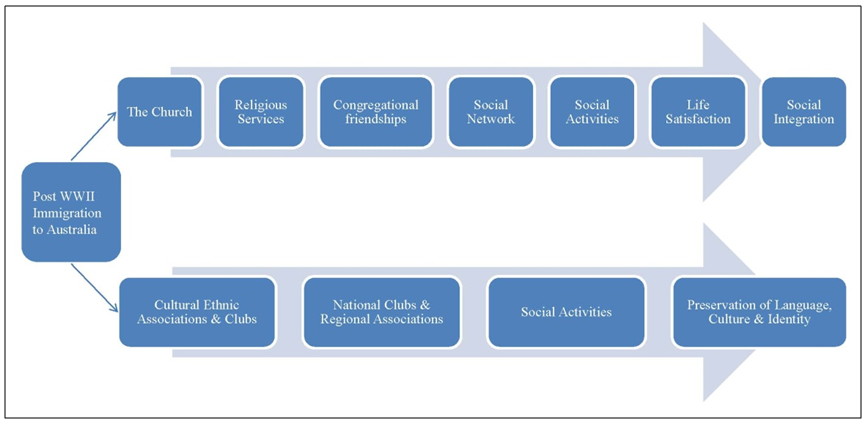 | Diagram 2. The Church’s role into the social integration process of Italians in Brisbane and the Associations and Clubs’ role in helping Italians to preserve their language, culture and identity |
4. Conclusions and Discussion
- The findings reveal that religious immigrants were more satisfied with their lives, because they regularly attend religious services, which contributed to build social networks within the congregations and finally facilitated the social integration process in Australia. As Italians immigrated and integrated into Australia, so did their culture and native traditions. Over time, the Italian culture has spread out along Australian life and integrated into communities across Australia. The Italian culture endured in the years, supported through cultural national and regional clubs and association, such as the National Italian Club, the ‘Dante Alighieri’ school of Italian in New Market, and/or ‘La Tavernetta’ and also through religious services and social activities performed within Catholic Parishes.Migrants encountered many social and economic benefits from participating in religious organizations. These aspects of religious participation are particularly salient to immigrants because they have many needs and few resources. Some catholic Parishes offered English classes, medical, and social services in their efforts to help immigrants to integrate. Teaching the catechism and offer social activities as well as special religious and education programs to children of migrants by the Catholic Church facilitated the social integration process of migrants within the Australian society.Differently from ethnical clubs and associations facilitating interactions mainly among Italians and therefore helping them to preserve their national language, culture and identity, Churches allowed for extensive multi-cultural / ethnical social interactions. Finally, the Parish provided a means of continuity with the past through reaffirmation of traditional and cultural values as well as facilitating migrants to integrate. Churches operated as an extended family for many Italian immigrants and became central to the lives of immigrants by catering to their everyday practical needs through the provision of resources and services. This model of religious organization helped post WWII Italian immigrants and their children to become Australian.
5. Further Research
- This research study, which is derived from the authors’ PhD thesis exploring the influence of socio-cultural factors on the architectural form of post WWII transnational houses, built by Italian migrants in Brisbane (Furlan, 2015a, 2015b, 2015c; Furlan & Faggion, 2015a, 2015b, 2016), investigated the way in which religion and immigration intersect across a transnational context, namely the extent to which religion and cultural/ethnic associations contribute to migrants’ social integration within the host environment. This study was limited to an exploration of (A) a defined cultural group - the Italian migrants - which (B) migrated to Australia in the post WWII period and (C) settled in a specific location - Brisbane. This suggests that the findings obtained through this exploration are related to a case study selected by restricted and manageable limits. It is hoped that this research study inspire sociologists and other scholars to develop further research related to religion and immigration. Further studies into the complex inquiry about religion, cultural/ethnic associations and immigration, which lies at the core of a cardinal area of social science theorizing, can be conducted in Australia: Australia is a multicultural society where (A) other cultural groups (B) migrated in different historical periods and (C) settled in different states and cities.
Appendix: Visual Material
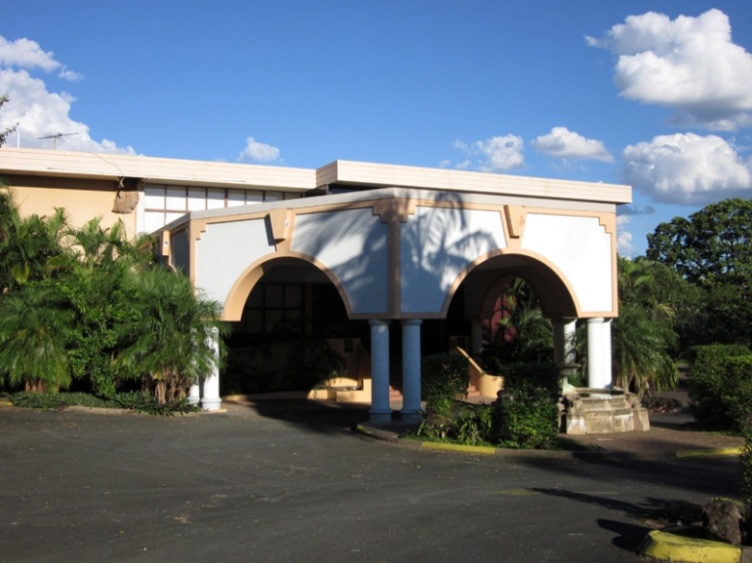 | Figure 1. The Italian Club in New Market, Brisbane |
 | Figure 2. Weekend-dinner at the Italian Club in New Market, Brisbane |
 | Figure 3. Reception of a wedding at the Italian Club |
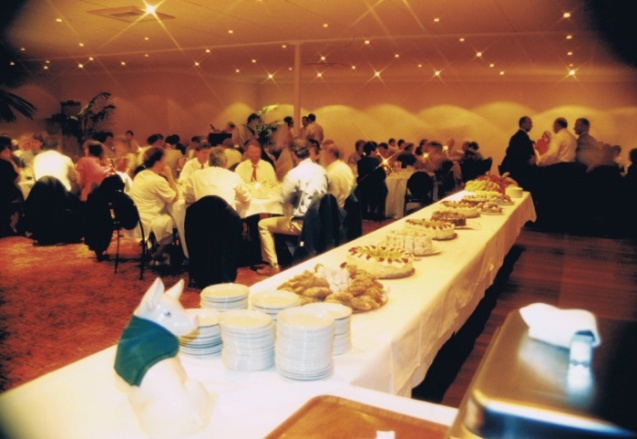 | Figure 4. Reception of a wedding at the Italian Club |
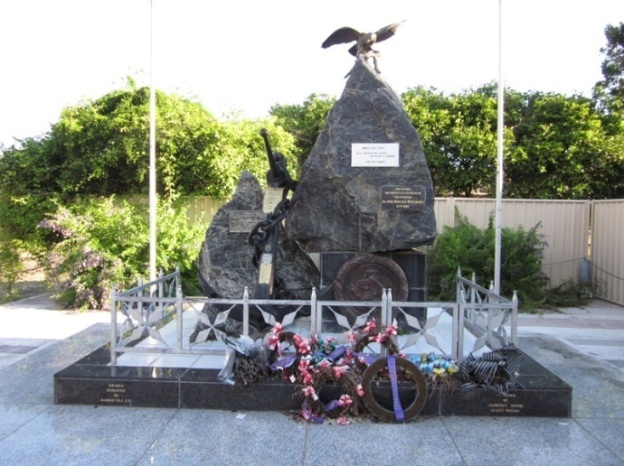 | Figure 5. Temple of the Alpini – Italian National Association |
 | Figure 6. Stone of the Alpini Italian National Association |
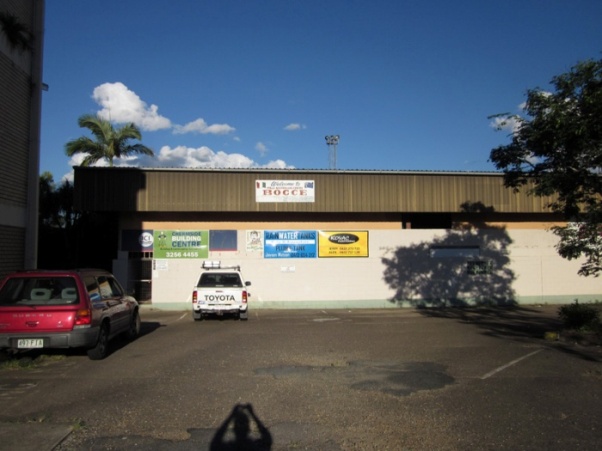 | Figure 7. The Bocce Italo Australian Centre (exterior) |
 | Figure 8. The Bocce Italo Australian Centre (interior) |
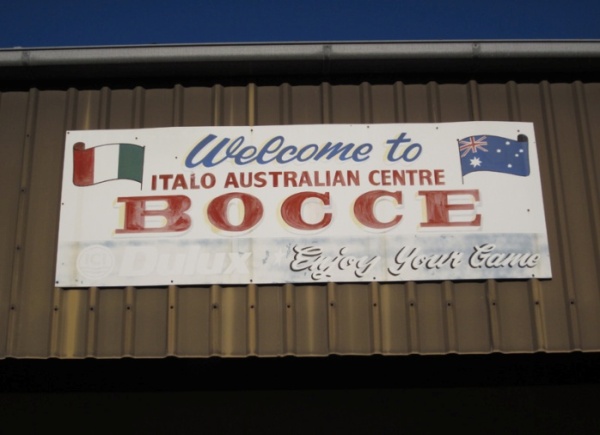 | Figure 9. Logo of the Italo Australian Centre |
 | Figure 10. Logo of the Dante Alighieri Italian School |
 | Figure 11. The Creation of Michelangelo |
 | Figure 12. The Last Supper of Leonardo Da Vinci |
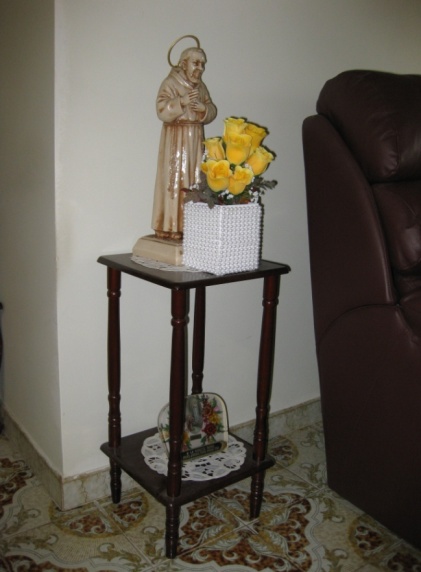 | Figure 13. Statue of Saint Pio X |
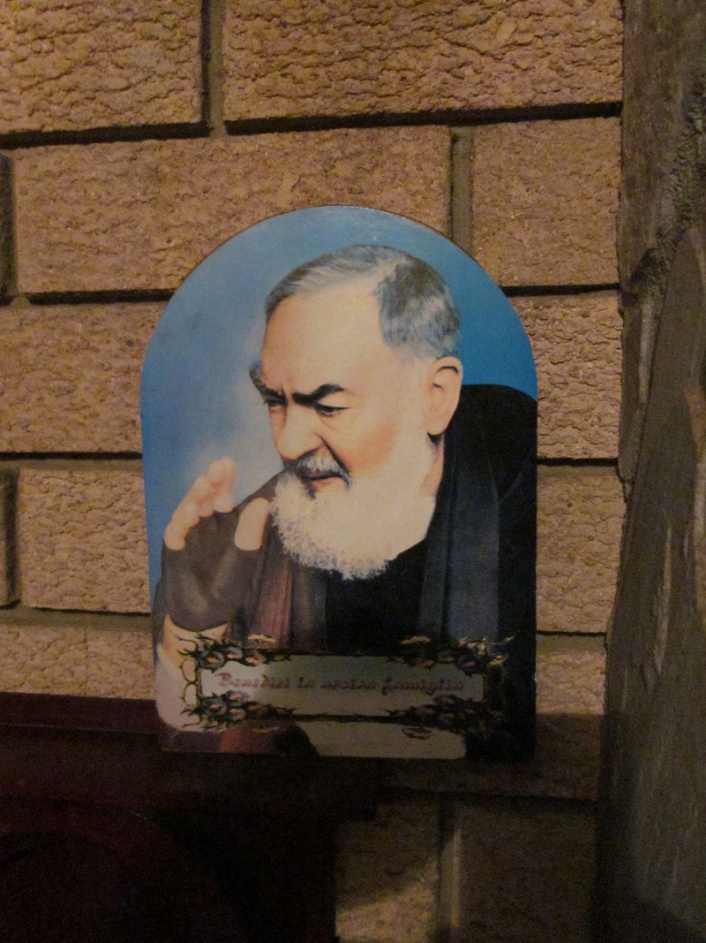 | Figure 14. Photo of Saint Pio X |
 | Figure 15. Temple to the Saint Virgin Marie |
 | Figure 16. Madonna of Leonardo Da Vinci |
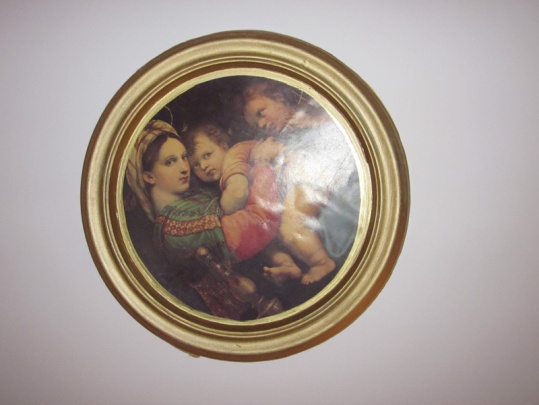 | Figure 17. Copy of the Tondo Doni of Michelangelo |
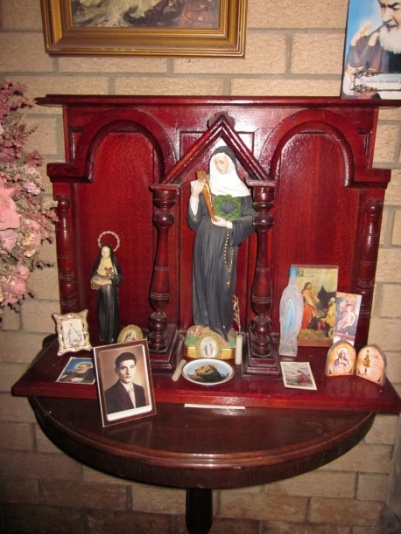 | Figure 18. Virgin Mary in memory of relatives |
 | Figure 19. St Kevin’s Church in Geebung, Brisbane |
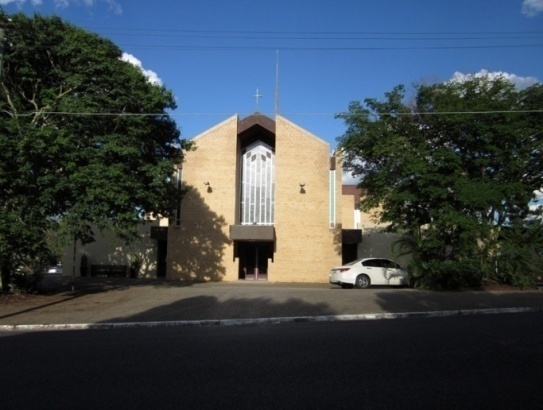 | Figure 20. Holy Cross Church in Wooloowin, Brisbane |
 | Figure 21/A. List of Italian Clubs and Associations in Queensland |
 | Figure 21/B. List of Italian Clubs and Associations in Queensland |
ACKNOWLEDGEMENTS
- The authors thank the anonymous reviewers for their comments, contributing to the improvement of this paper, which is derived from the authors’ PhD thesis.
 Abstract
Abstract Reference
Reference Full-Text PDF
Full-Text PDF Full-text HTML
Full-text HTML